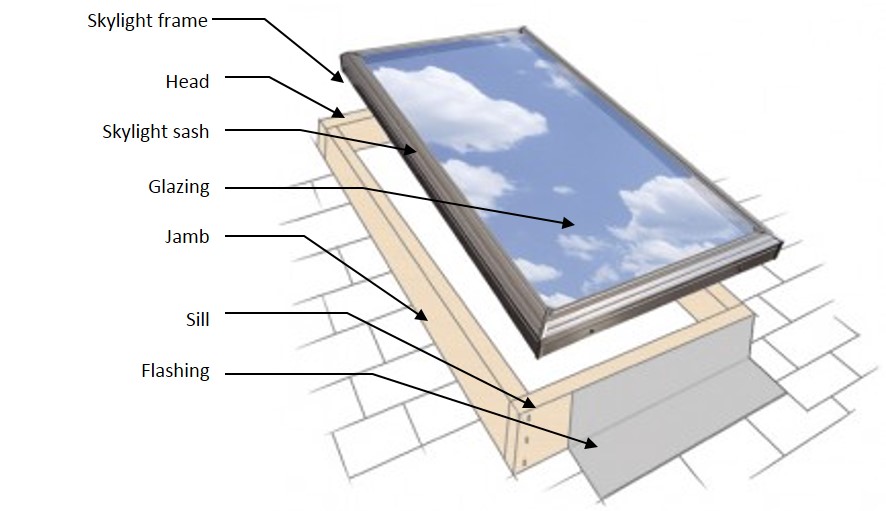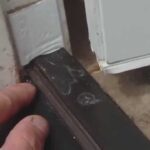Installing skylight flashing can seem daunting. It’s essential for preventing leaks.
Skylight flashing is a crucial step in ensuring your skylight is weatherproof. Proper installation helps keep water from seeping through your roof, protecting your home from potential damage. This guide will walk you through the process, making it straightforward and manageable.
You’ll learn what tools you need and the steps to follow for a successful installation. Whether you’re a seasoned DIY enthusiast or a beginner, this article will provide clear, easy-to-follow instructions to help you get the job done right. So, let’s dive into the world of skylight flashing and ensure your skylight is secure and leak-free.

Credit: basc.pnnl.gov
Tools And Materials
Installing skylight flashing requires the right tools and materials. Without them, the process can be challenging. This section will guide you through the necessary tools and required materials for a smooth installation.
Necessary Tools
To install skylight flashing, gather these essential tools:
- Measuring tape
- Utility knife
- Hammer
- Screwdriver
- Chalk line
- Caulk gun
- Metal snips
- Ladder
Each tool has a specific purpose. A measuring tape ensures accurate measurements. A utility knife helps cut materials. A hammer and screwdriver are needed for securing parts. A chalk line marks straight lines. A caulk gun applies sealant. Metal snips cut flashing materials. A ladder gives you safe access to the roof.
Required Materials
Besides tools, you need specific materials for skylight flashing installation:
- Flashing kit
- Sealant
- Roofing nails
- Underlayment
- Roofing shingles
A flashing kit includes pre-formed pieces. These fit around the skylight. Sealant ensures watertight seals. Roofing nails secure the flashing and shingles. Underlayment provides an extra layer of protection. Roofing shingles cover the flashing, blending it with the roof.
With these tools and materials, you’re ready to install skylight flashing. Gather everything before you begin. This makes the installation process smoother and more efficient.
Preparation
Installing skylight flashing requires careful preparation to ensure a secure and weather-tight fit. Proper planning will save time and prevent future issues. Below are the essential steps for the preparation phase.
Inspecting The Roof
Start by inspecting the roof for any damage. Check for loose or missing shingles. Ensure the roof structure is sound and capable of supporting the skylight. Identifying and repairing any damage now will prevent future leaks and problems.
| Inspection Checklist | Details |
|---|---|
| Shingles | Check for damage or missing pieces |
| Roof Structure | Ensure it is strong and stable |
| Water Damage | Look for signs of leaks or rot |
Measuring The Skylight
Accurate measurements are critical for a proper fit. Use a tape measure to determine the dimensions of the skylight. Note the width, length, and depth. Record these measurements carefully.
- Measure the width of the opening.
- Measure the length of the opening.
- Measure the depth of the opening.
Double-check all measurements. Ensure they match the skylight’s specifications. This step ensures the flashing will fit properly and provide a weather-tight seal.
Removing Old Flashing
Removing old flashing is a crucial step in installing skylight flashing. This process ensures a clean, secure base for the new installation. Follow these steps to remove the old flashing effectively.
Detaching Old Flashing
To begin, gather your tools. You will need a pry bar, hammer, and utility knife. Carefully insert the pry bar under the edge of the old flashing. Gently lift to loosen the nails or screws. Remove these fasteners completely. Use the hammer if needed. Be patient. Work slowly to avoid damaging the roof.
Cut any sealant or adhesive with the utility knife. This may require some effort. Ensure all attachments are free before pulling off the flashing. Once loose, remove the old flashing. Dispose of it properly. Now, you have a clear view of the roof surface.
Cleaning The Area
Next, clean the area where the old flashing was. Remove any debris, old nails, and sealant residue. Use a scraper or putty knife for this task. Ensure the surface is smooth and clear.
Check for any damage on the roof. Repair any damaged shingles or surfaces. Cleaning the area thoroughly ensures a tight seal for the new flashing. A clean, smooth surface is vital for a successful skylight installation.
Installing New Flashing
Replacing or installing new skylight flashing can seem challenging. With clear steps, it becomes manageable. This guide helps you through the process.
Positioning The Flashing
Properly positioning the flashing is critical for a leak-free skylight.
- Ensure the skylight curb is clean and dry.
- Place the bottom flashing piece first. It should cover the lower edge of the skylight and extend onto the roof.
- Align the side flashing pieces next. They should overlap the bottom flashing.
- Finish with the top flashing. It overlaps the side pieces for complete coverage.
Check alignment before securing the pieces.
Securing The Flashing
Securing the flashing ensures it stays in place. Proper sealing prevents leaks.
- Use roofing nails to secure the flashing pieces.
- Drive the nails through the flashing into the roof deck.
- Ensure the nails are evenly spaced, about every 6 inches.
- Apply a generous amount of roofing cement over the nail heads.
- Press the flashing firmly to ensure the cement bonds well.
Inspect the installation to ensure a tight seal.
Test for leaks with a garden hose. Make adjustments if necessary.
Sealing The Flashing
Sealing the flashing is a crucial step in installing skylight flashing. Proper sealing ensures that no water seeps into your home. This step involves applying sealant and ensuring waterproofing. Both are critical for a successful installation.
Applying Sealant
First, gather your materials. You will need a quality sealant, a caulk gun, and a putty knife. These tools will help you apply the sealant correctly.
Start by cleaning the area where the flashing meets the roof. Remove any dirt or debris to ensure a good seal. Apply a generous bead of sealant along the edges of the flashing. Use the caulk gun for a steady, even application.
Next, smooth the sealant with a putty knife. This helps it adhere better and look clean. Make sure the sealant covers all gaps and edges. This step is vital for preventing leaks.
Ensuring Waterproofing
After applying the sealant, check for any missed spots. Even small gaps can cause leaks. Reapply sealant where necessary.
Use a water test to ensure waterproofing. Spray water over the skylight and flashing. Check inside for any signs of water. If you find any, reapply sealant to those areas.
Consider using waterproof flashing tape for extra protection. This tape adds a second layer of waterproofing. Apply it over the sealant and flashing edges.
| Step | Action |
|---|---|
| 1 | Clean the area |
| 2 | Apply sealant |
| 3 | Smooth the sealant |
| 4 | Check for gaps |
| 5 | Conduct a water test |
| 6 | Apply waterproof flashing tape |
Sealing the flashing is not just about applying sealant. Ensuring waterproofing is just as important. Follow these steps to protect your home from leaks.
Final Adjustments
Making final adjustments is crucial for a successful skylight installation. This step ensures everything is secure, watertight, and ready to provide natural light. Let’s go through the necessary checks and reinforcements.
Checking For Gaps
Inspect the skylight edges. Look for any gaps between the flashing and the roof. Even small gaps can cause leaks. Use a flashlight to check for tiny openings. Run your hand along the edges. Feel for any drafts or uneven spots.
If you find gaps, fill them with roofing sealant. Apply a generous amount to ensure a tight seal. Smooth it out with a putty knife. This prevents water from entering your home.
Reinforcing Attachment
Check the skylight screws and nails. Make sure they are tight. Loose fasteners can cause the skylight to shift. Use a screwdriver or hammer to secure them. This helps keep everything in place.
Consider adding extra screws for added security. Place them evenly around the skylight frame. This reinforces the attachment and provides extra stability.
Once everything feels secure, test the skylight’s operation. Open and close it a few times. Ensure it moves smoothly and locks properly. This step is essential for a well-functioning skylight.
Maintenance Tips
Installing skylight flashing is an excellent way to bring natural light into your home. However, it is crucial to maintain it properly to avoid leaks and ensure longevity. Below are some essential maintenance tips to keep your skylight flashing in top condition.
Regular Inspections
Conduct regular inspections to identify potential issues early. Check the skylight flashing at least twice a year. Look for signs of wear and tear, including rust, cracks, or missing parts.
Also, inspect the surrounding roof area for debris or blockages. Remove leaves, branches, and any other debris that may cause water to pool around the skylight.
| Inspection Task | Frequency |
|---|---|
| Check for rust and cracks | Twice a year |
| Remove debris | As needed |
Repairing Damages
If you find any damages during your inspections, repair them immediately. Small issues can escalate quickly, leading to more significant problems like water damage or mold.
- Identify the damaged area.
- Use a sealant to fix small cracks.
- For larger issues, replace the damaged flashing.
Ensure to use materials that are compatible with your existing skylight. Using the wrong materials can cause more damage and reduce the lifespan of your skylight.
Consider hiring a professional if you are unsure how to repair the damages yourself. This will ensure the job is done correctly and safely.

Credit: www.reddit.com

Credit: www.finehomebuilding.com
Frequently Asked Questions
What Tools Do I Need To Install Skylight Flashing?
You will need a hammer, screwdriver, utility knife, tape measure, and caulking gun.
How Do I Prepare The Roof For Skylight Flashing?
Clean the roof area. Remove any debris. Ensure the surface is smooth and dry.
What Type Of Sealant Should I Use For Skylight Flashing?
Use a high-quality, waterproof sealant. Silicone-based sealants are highly recommended for skylight flashing.
Can I Install Skylight Flashing Myself?
Yes, with proper tools and instructions. Follow the manufacturer’s guidelines carefully for best results.
How Do I Ensure Skylight Flashing Is Watertight?
Apply sealant generously. Overlap flashing pieces. Check for gaps and secure tightly to prevent leaks.
Conclusion
Installing skylight flashing can seem tricky, but it’s manageable with patience. Follow the steps carefully and ensure you have all necessary tools. Proper flashing prevents leaks and enhances your home’s natural light. Regular checks and maintenance can extend the life of your skylight.
Remember, safety is crucial. If you feel unsure, seek professional help. With careful attention, your skylight will be a beautiful, functional addition. Enjoy the extra light and energy savings!


